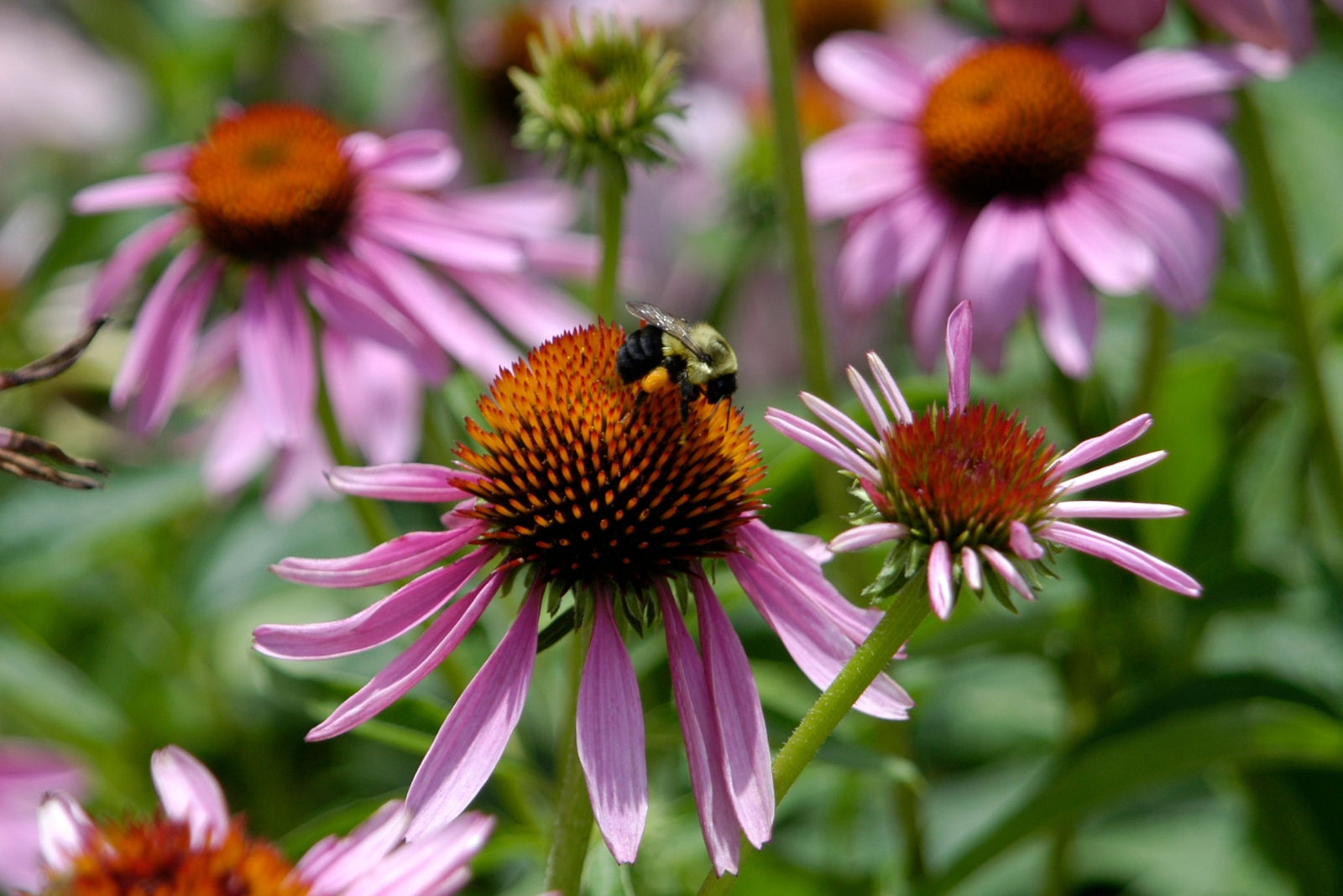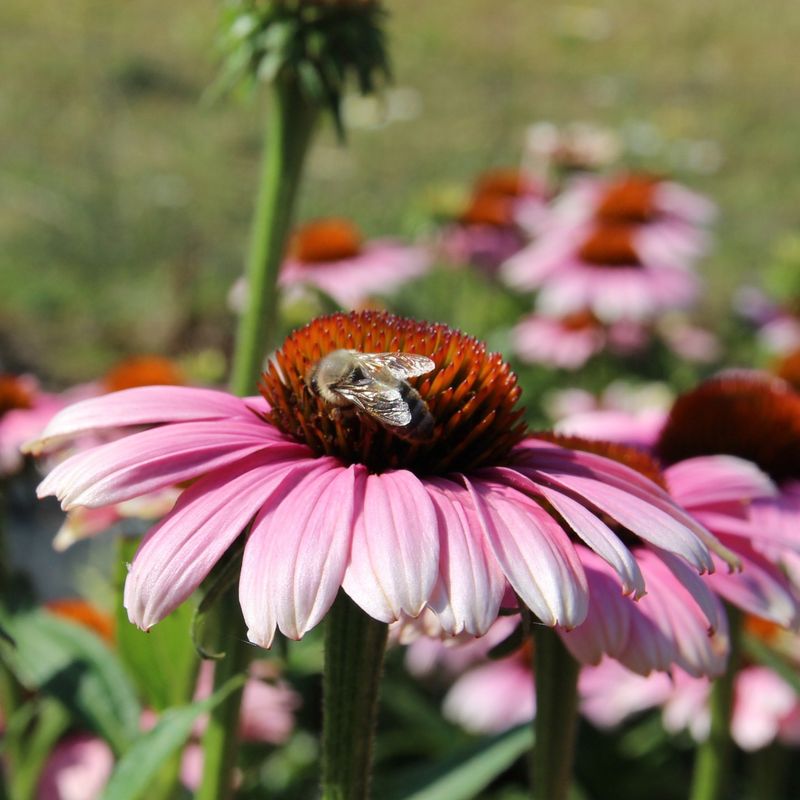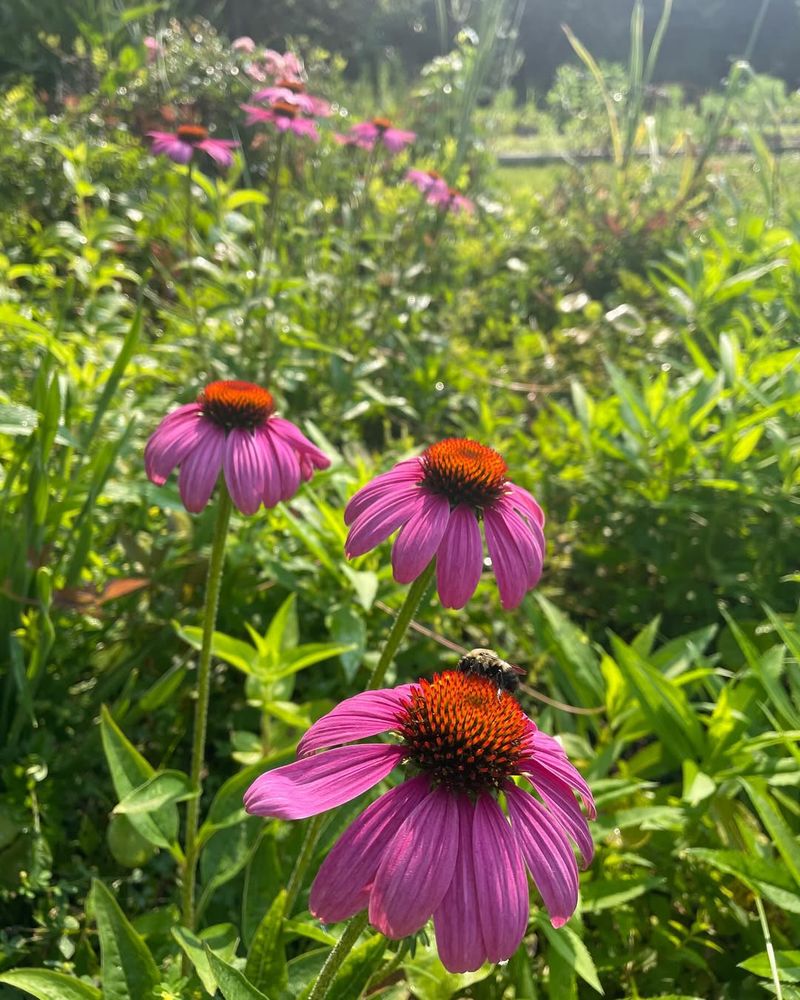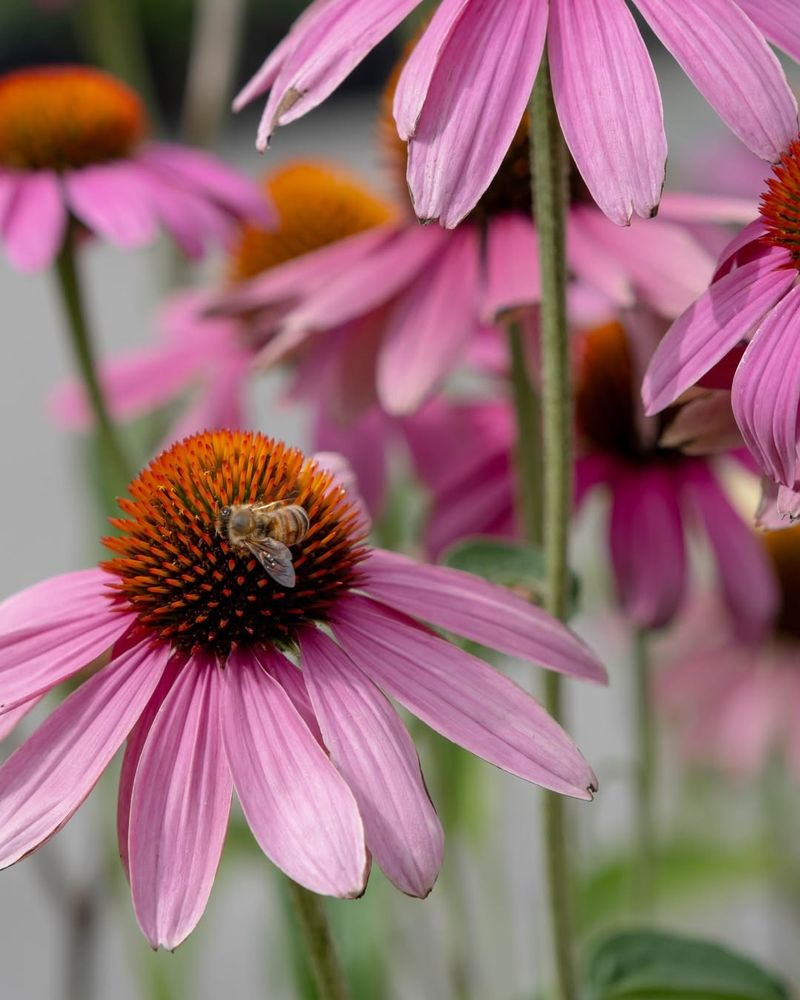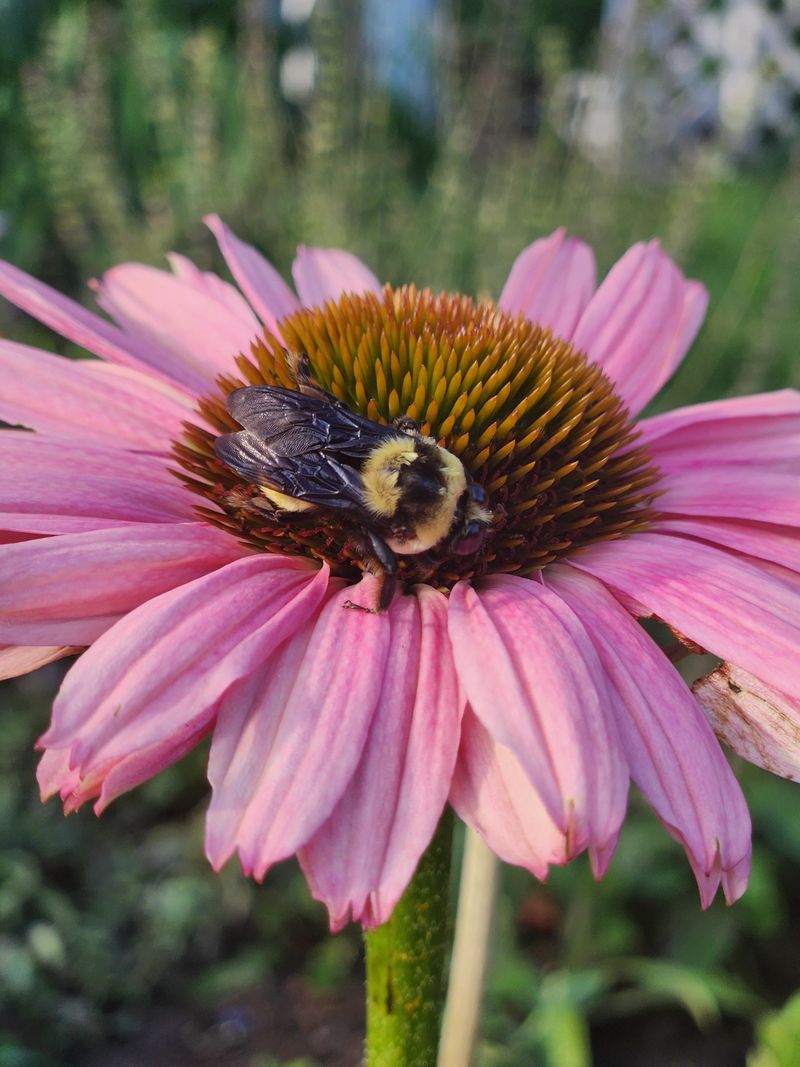North Carolina gardens always have a few seasonal standouts, but one plant has bees buzzing around it like it’s the hottest spot in town.
I planted a patch in my own yard and couldn’t believe how fast the pollinators showed up. The secret star is purple coneflowers, and bees treat them like an all-you-can-eat buffet all season long.
Add a few to your garden and you’ll see just how quickly they turn your yard into a buzzing little hangout.
1. Nectar-Rich Blooms Provide Energy
With every visit, bees find a sweet reward waiting in the center of each purple coneflower. The nectar fuels their busy days of flying from flower to flower across North Carolina gardens.
Unlike some plants that offer little nutrition, coneflowers deliver high-quality nectar that keeps bee colonies healthy and strong. Worker bees need constant energy, and these flowers provide exactly what they need to thrive throughout the growing season.
2. Easy Landing Platform Design
Nature designed purple coneflowers with bees in mind. The raised center cone acts like a perfect landing pad, giving pollinators a sturdy place to grip while they collect food.
Bees across North Carolina appreciate flowers that make their job easier, and the coneflower’s structure is ideal for their small bodies. The textured surface prevents slipping, even on windy days when other flowers might be too difficult to navigate safely.
3. Long Blooming Season Means Consistent Food
From early summer through fall, purple coneflowers keep producing fresh blooms when many other plants have stopped flowering. Bees in North Carolina depend on reliable food sources that last for months, not just weeks.
Gardens filled with these hardy perennials become dependable cafeterias for hungry pollinators. When drought hits or temperatures climb, coneflowers continue blooming while less resilient plants fade away, ensuring bees never go hungry.
4. Bright Purple Color Attracts Attention
Bees see colors differently than humans do, and purple ranks among their absolute favorites. The vibrant petals act like neon signs, advertising fresh nectar to pollinators flying overhead in North Carolina neighborhoods.
Scientists have discovered that bees have special vision receptors that make purple and blue flowers especially visible. When coneflowers bloom, their bold color stands out against green foliage, making them impossible for hungry bees to miss during their foraging flights.
5. Pollen Packed With Protein
Beyond nectar, purple coneflowers offer abundant pollen that bees collect to feed their developing larvae back at the hive. North Carolina bee colonies need protein-rich pollen to raise healthy new generations of workers.
Watch closely and you’ll see bees stuffing yellow pollen into special baskets on their legs. A single coneflower produces enough pollen to feed multiple bee families, making these plants essential for colony survival and growth throughout the season.
6. Native Plant Means Natural Partnership
Purple coneflowers evolved right alongside North Carolina’s native bee species over thousands of years. This ancient relationship means local bees instinctively recognize these flowers as trustworthy food sources.
Native plants and native pollinators work together like old friends who understand each other perfectly. When you plant coneflowers, you’re restoring natural connections that have existed long before modern gardens, helping local ecosystems function the way nature intended them to work.
7. Pesticide-Free Petals Keep Bees Safe
Many gardeners in North Carolina grow purple coneflowers without chemical treatments because these tough plants resist pests naturally. Bees benefit enormously from flowers that won’t poison them during feeding.
Pesticides can harm bee navigation, memory, and reproduction, but coneflowers rarely need such treatments. By choosing these low-maintenance plants, you create a safe dining environment where pollinators can eat without exposure to dangerous chemicals that threaten their survival and health.

